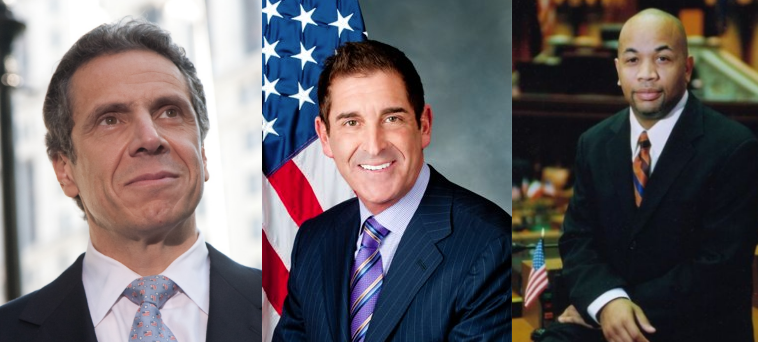A broad spectrum of New York City voters approve of putting speed enforcement cameras near schools, and a majority favor expanding the city's existing speed camera program, according to a poll commissioned by Transportation Alternatives.
Right now, Albany limits NYC to 140 speed enforcement cameras for all 6,000 miles of surface streets in the city. Cameras have to be placed near schools and can be operated only during school hours. As a result, some of the most dangerous streets in the city are ineligible for the cameras, and they're turned off during low-visibility hours when pedestrians are especially at risk.
Even with those restrictions, cameras caught 10 times as many speeding motorists as NYPD did in 2016.
The poll of 880 likely New York voters by Penn Schoen Berland found that 64 percent "strongly support" using speed cameras in school zones, and 20 percent "somewhat support" it. Only 9 percent of survey participants said they "strongly oppose" speed cameras around schools.
"The level of strong support is significantly higher among women (72 percent) and respondents who identified as Black (78 percent), Hispanic (79 percent), and lower-income (80 percent)," TA noted in a press release.
Support for cameras was not limited to car-free New Yorkers: 60 percent of car owners who participated in the survey indicated strong support for more automated enforcement.
TA estimates that expanding speed camera coverage to all NYC schools would save 100 lives and prevent 2,700 crashes and 1,400 serious injuries a year.
Asked if they support expanding the use of cameras in school zones, 72 percent of poll respondents said they strongly or somewhat support, and 25 percent were somewhat or strongly opposed.
The poll found majority support for expanding automated enforcement outside of school zones as well, with 58 percent strongly or somewhat in favor and 40 percent somewhat or strongly opposed.
Another key finding: 64 percent said speed cameras should be activated 24 hours a day. DOT data show that 85 percent of traffic deaths and serious injuries occur at times and locations that are ineligible for speed camera enforcement under Albany's restrictions.
“These poll results send a powerful message that people across the five boroughs want greater protection from the reckless speeding that remains a leading killer of New Yorkers and is especially lethal for our children,” said TA Executive Director Paul Steely White in a statement. “In areas where these devices have been installed, we’ve seen a 50 percent drop in speeding on average. We know this Vision Zero tool works. We need to be able to use it to save lives and prevent injuries in every community, at all times.”
Last year members of Families for Safe Streets and dozens of children went to Albany to press for speed cameras outside every school in the city. But Assembly Speaker Carl Heastie, who represents the Bronx, declined to back even a modest increase in the number of speed cameras allowed in NYC. Jeff Klein, also a Bronx rep and the leader of the Senate's powerful Independent Democratic Conference, was a no-show, though he has shepherded speed camera legislation in the past.
TA has said it will focus on getting support from Governor Cuomo this session. Members of Families for Safe Streets are meeting with Cuomo staffers in Albany today.
The Every School Speed Safety Camera Act, which TA and Families for Safe Streets hope Cuomo will endorse, would allow speed enforcement cameras at every school in the city, expand where cameras may be deployed to a quarter-mile radius around schools (rather than limiting placement to streets abutting a school entrance), and let the city keep the cameras on at all times.
The bill was sponsored last year by Assembly Member Deborah Glick, of Manhattan, and State Senator Jose Peralta, of Queens.
“Speeding kills more New Yorkers than drunk driving and cell phone use at the wheel combined, and traffic crashes are the number one cause of injury-related death among our kids,” said Amy Cohen, whose 12-year-old son Sammy was killed by a speeding driver in Brooklyn, in a statement. “We need them 24/7 on the most dangerous streets that children cross coming to and from school. State lawmakers and the governor must take action this session, so no more families will have to lose loved ones or suffer serious injury because of crashes that we can prevent, caused by reckless behavior we can deter.”






